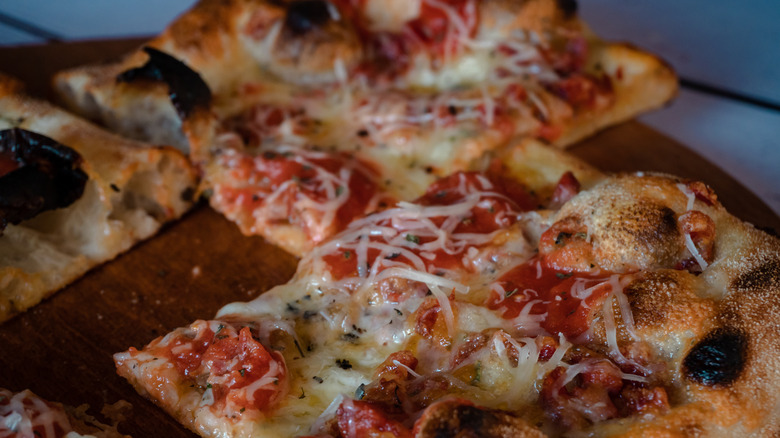The Type Of Pan Chef Dan Kluger Recommends For Grandma-Style Pizza
We may receive a commission on purchases made from links.
Whether it's Sicilian, Detroit-style, or Chicago-style, pizza often can't be baked without the appropriate pan. So, Mashed reached out to James Beard Award-winning chef Dan Kluger of Greywind to find out what pan works best for grandma-style pizza in particular. When asked what the benefits are of using rectangular pans, and if the type of pan actually makes a difference, Kluger says, "The rectangular pan is really just a preference and is typically a bit easier to fill and form the dough [with]." He continues, "I like a heavy gauge pan like our OXO pans, which also have a textured pattern on the bottom, which I find creates a little more airflow and a better crust." In fact, the kitchen-supply company OXO describes Kluger as a "longtime OXO friend," and one example of his preferred pan is the OXO Good Grips Non-Stick Pro.
Typically, grandma-style pizzas are quite thin, but chef Kluger says using thin versus thick crust is simply a preference. He's a good authority on this, too, as his NYC-based, exclusively to-go pizzeria — Washington Squares – specializes in grandma-style pizza. As for how to achieve a dough that's crispy on the outside but fairly fluffy inside, Kluger advises, "The pan helps, and it's a matter of properly proofing the dough and giving it the correct amount of time. Also, cooking the pizza a little slower and longer helps."
What exactly is grandma-style pizza?
Grandma-style pizza was originated in New York by Italian immigrants, who made it in a similar manner to Sicilian pizza. However, there are too many differences between the two to use these terms interchangeably. One difference is in the way grandma-style pizza is prepared. First, the dough covers an olive-oil-coated rectangular pan, then the cheese goes in first, while the sauce goes above it.
Adding cheese before sauce prevents the dairy from getting burnt, the generous amount of olive oil helps chefs remove the pizza from the pan while ensuring the crust is extra crispy, and the usual non-proofing of the dough further crisps up the crust. However, as chef Dan Kluger points out, it can also come down to how that dough is proofed — if one decides to proof it, after all. Arguably the biggest difference between grandma-style and Sicilian pizza, though, is the final product. While both types of pizza are crispy, grandma-style is ultimately a bit denser on the inside than Sicilian pizza's notably fluffy interior.

